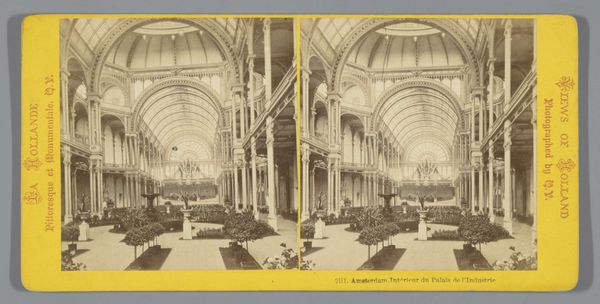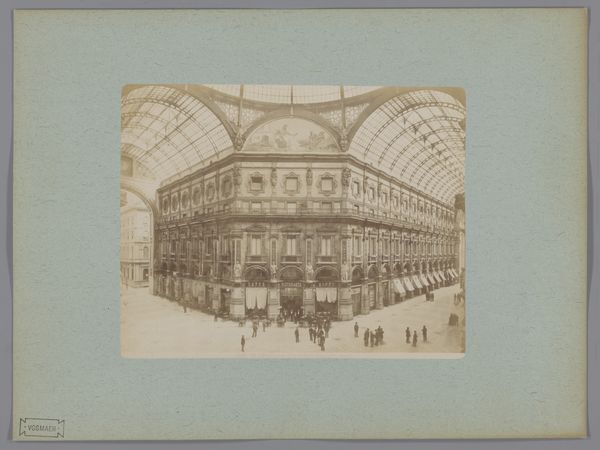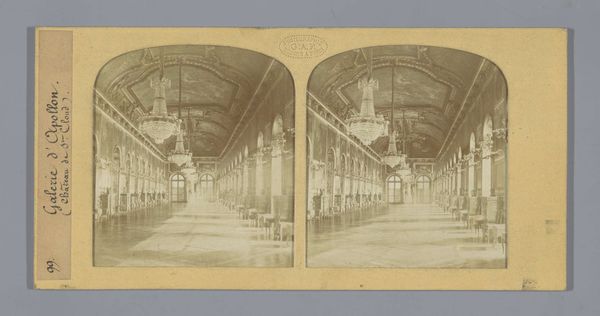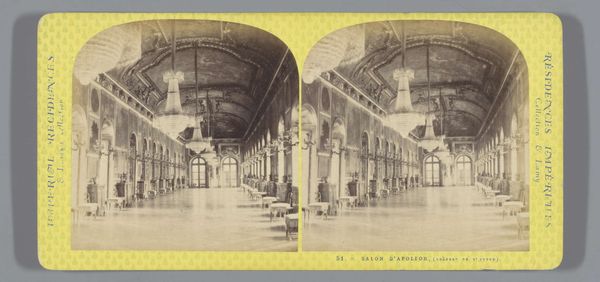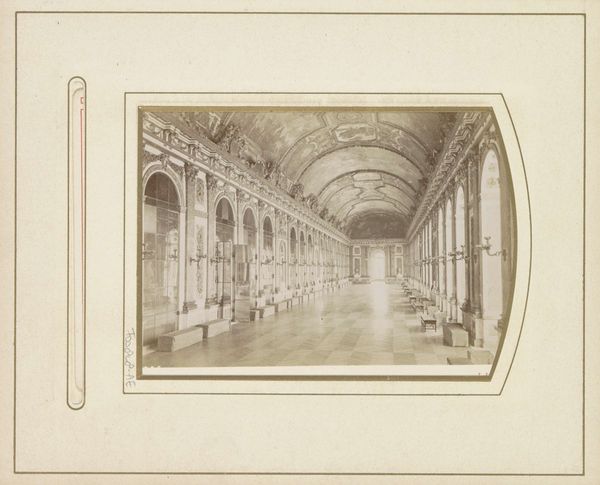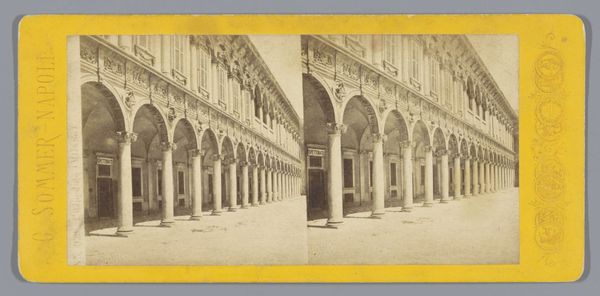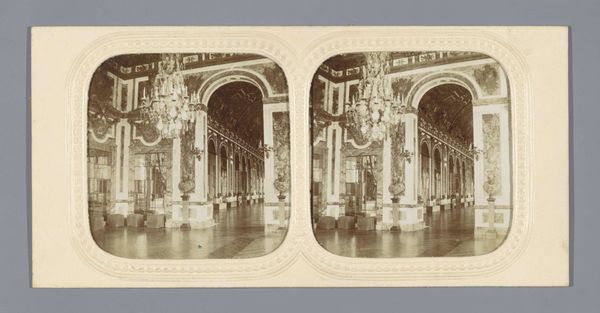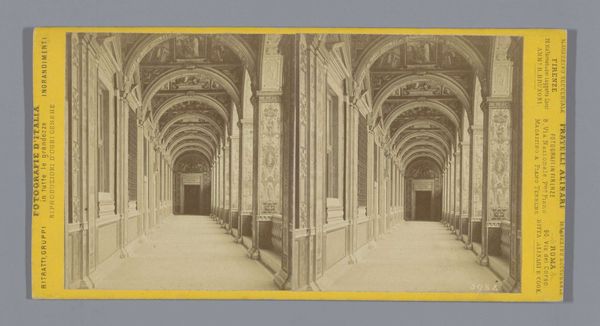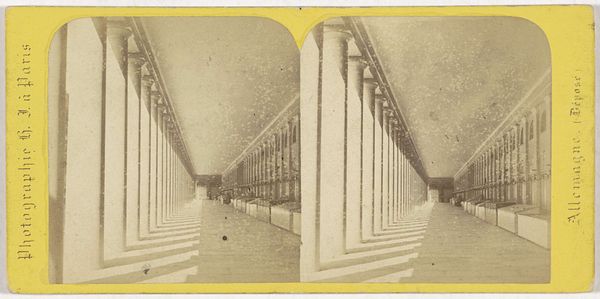
Interieur van de Galleria Vittorio Emanuele in Milaan c. 1860 - 1880
0:00
0:00
giorgiosommer
Rijksmuseum
Dimensions: height 87 mm, width 177 mm
Copyright: Rijks Museum: Open Domain
Editor: Here we have Giorgio Sommer’s “Interieur van de Galleria Vittorio Emanuele in Milaan,” dating from around 1860 to 1880. It’s a photograph depicting the interior of the Galleria. It looks like it was created using albumen print. The light streaming through the glass ceiling is incredible. What do you see in this piece? Curator: Beyond the surface image, I'm drawn to the means of production of this photograph, and what it signifies. This stereoscopic image, printed using albumen, points to a particular moment in photographic history when technique and industry were intertwined. How did the mass production of images like this affect perceptions of urban space and the rise of consumer culture? Editor: That’s interesting. I hadn’t thought about the technical aspects so deeply. So you’re suggesting the image isn’t just of a place, but also about the burgeoning photographic industry? Curator: Precisely. Consider the labour involved – the photographers, the chemists preparing the albumen, the printers. This wasn't solitary artistic expression, but a collaborative industrial effort. And what was its impact? Did it democratise art, or did it contribute to the commodification of experience itself, reducing Milan's Galleria to just another object for consumption? Editor: It really reframes how I look at photography from that period. The albumen print transforms from just being the process into the point. Curator: Indeed! It challenges us to question the distinction between fine art and commercial production, demanding we recognise art as an economic activity tied to material conditions. Editor: Thank you! Now I will be researching more about it, thanks to you and your words. Curator: Likewise! Thinking about the labour and economic context really brings the image to life.
Comments
No comments
Be the first to comment and join the conversation on the ultimate creative platform.

